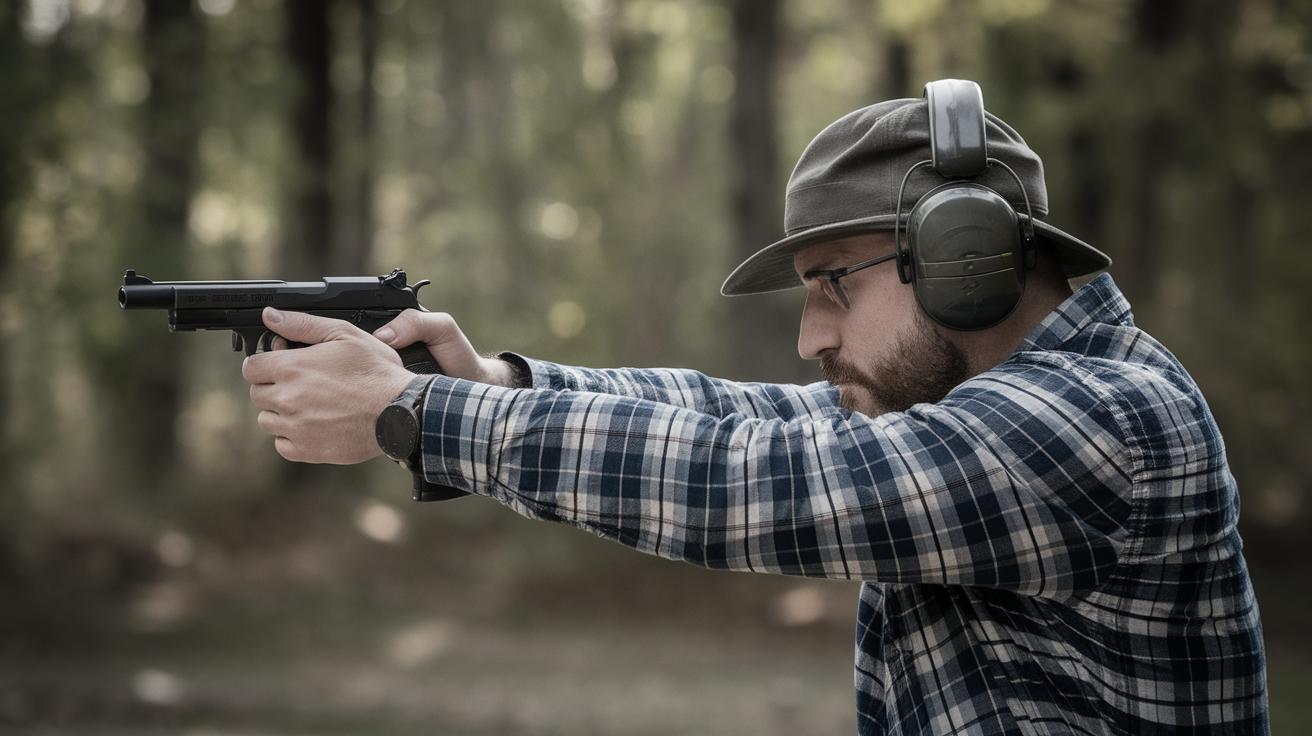Is It Hard to Shoot a Gun?
Shooting a gun for the first time can feel challenging, but understanding and mastering the fundamental techniques can greatly enhance the experience. In this article, we’ll deconstruct the basic mechanics of shooting a firearm by focusing on key areas such as the “power stance,” the high hand grasp, and the hard grip. Each of these elements plays a crucial role in the accuracy and control needed to handle a gun safely and effectively. Additionally, we will discuss the importance of sight alignment, particularly regarding the front sight, and the nuanced technique of smoothly rolling the trigger. Finally, we’ll offer some practical suggestions to help beginners and experienced shooters alike refine their skills. By the end of this exploration, readers will gain valuable insights into the art of shooting, demystifying the perceived difficulty of firing a gun.
The “Power Stance”
The foundation of shooting accuracy is rooted in the stance, commonly referred to as the “power stance.” This posture involves positioning your feet shoulder-width apart and aligning your body perpendicular to the target. The goal is to establish a stable base from which you can easily control the recoil and maintain balance. A solid stance not only improves precision but also enhances confidence when handling a firearm.
Proper distribution of weight across both feet is critical. Leaning slightly forward from the hips provides better control over the firearm, allowing you to absorb the recoil without tipping backward. Flex your knees slightly to maintain flexibility and respond dynamically to each shot. Mastering the power stance takes practice, but once it’s perfected, it greatly reduces the physical effort required to control the gun, making shooting feel more intuitive.
High Hand Grasp
Holding the gun correctly is essential for accuracy and safety. The high hand grasp ensures a secure hold on the firearm, with the webbing between your thumb and index finger positioned as high as possible on the back strap of the gun. This grip minimizes muzzle flip and enhances control, enabling quicker, more accurate follow-up shots.
The support hand plays a crucial role in stabilizing the weapon. Wrap your non-dominant hand around your dominant hand, fingers curled, and thumbs pointing forward. This reinforced grip helps manage recoil effectively. Practicing this grasp repeatedly will build muscle memory, leading to a more natural and confident shooting experience.
Hard Grip
Applying a firm grip on the firearm is vital for maintaining control. A hard grip doesn’t mean squeezing the gun with all your might but rather exerting steady, even pressure that allows full control over the weapon. The dominant hand should apply pressure from the rear while the support hand applies from the sides.
A proper grip significantly impacts accuracy. Too much pressure can lead to fatigue and tremors, while too little can cause the gun to slip unexpectedly. Finding the balance between a hard grip and relaxation is crucial for both comfort and precision in shooting.
Front Sight
Sight alignment, particularly focusing on the front sight, is a cornerstone of accurate shooting. The front sight of the gun should be the clearest part in your sight picture while the target and rear sight remain slightly blurred. This focus ensures that you aim consistently and adjust quickly after each shot.
Training your eyes to pick up the front sight rapidly in various conditions enhances shooting precision. Consistent practice with aligning sights helps develop reflexive aiming, allowing you to quickly establish alignment even in high-pressure situations, thus improving overall accuracy.
Smoothly Roll the Trigger
Trigger control involves smoothly rolling the trigger back with consistent, steady pressure. Jerking or pulling the trigger abruptly can result in missed targets and decreased accuracy due to the introduction of unwanted movement.
The trigger pull should be continuous and free of interruption. Think of it as pressing the trigger straight back towards the rear sight without compromising your grip or sight alignment. Practicing this technique requires patience and repetition, but it is key to enhancing your shooting proficiency.
Some Suggestions
Whether you’re a beginner or a seasoned shooter, engaging in regular practice is essential. Dry firing exercises, which involve practicing trigger control and sight alignment without live ammunition, can be incredibly beneficial for honing skills without the cost and logistics associated with visiting a shooting range.
Investing in professional coaching can also provide personalized insights into improving your technique. A qualified instructor can offer immediate feedback, helping you adjust your stance, grip, or trigger pull as necessary. Remember, safety should always be a priority—wearing proper eye and ear protection is non-negotiable during live practice sessions.
Leave a Reply
Your experiences and insights on shooting can greatly benefit others in the community. Have you found certain techniques that helped improve your accuracy or control? Share your thoughts in the comments below, whether you’re offering advice, asking questions, or simply discussing your journey in mastering the art of shooting. Engaging in these discussions not only enhances your understanding but also contributes to the collective knowledge of enthusiasts eager to learn and share.
Next Steps
| Aspect | Key Points |
|---|---|
| The “Power Stance” | Stability and balance; weight distribution; knee flexing for recoil management. |
| High Hand Grasp | High positioning grip; wrap non-dominant hand around dominant hand for stability. |
| Hard Grip | Even pressure application; control while avoiding fatigue-induced tremors. |
| Front Sight | Consistent focus on front sight; reflexive aiming for high-pressure adaptability. |
| Smoothly Roll the Trigger | Continuous pressure application without interruptions; practicing patience and repetition. |
| Some Suggestions | Regular practice, dry firing, professional coaching, safety precautions. |
